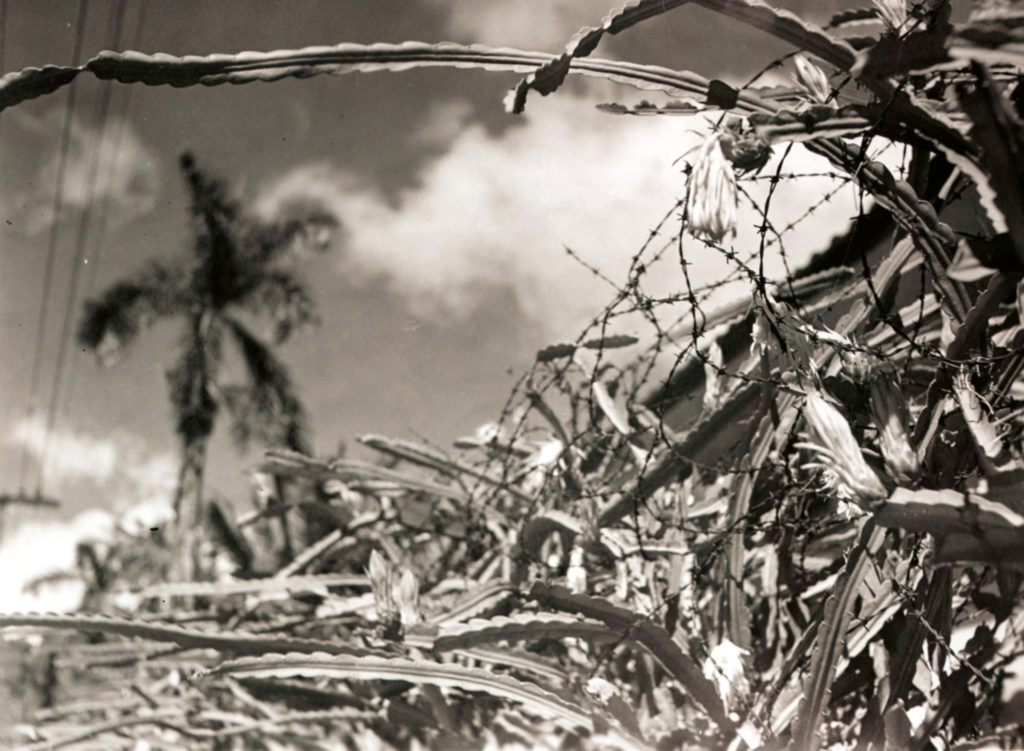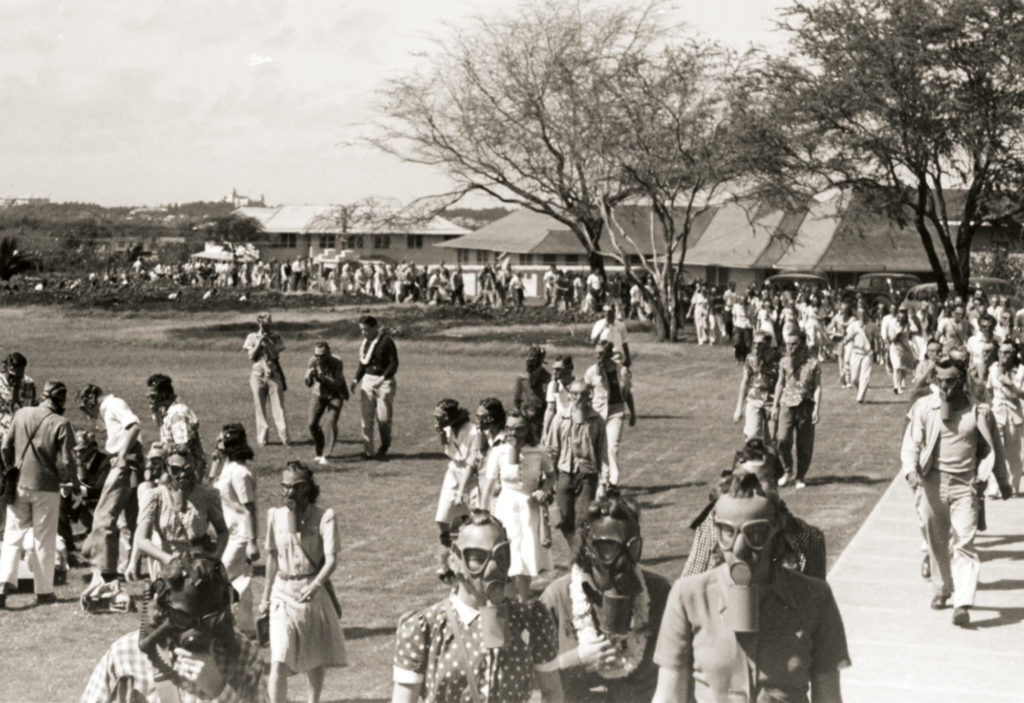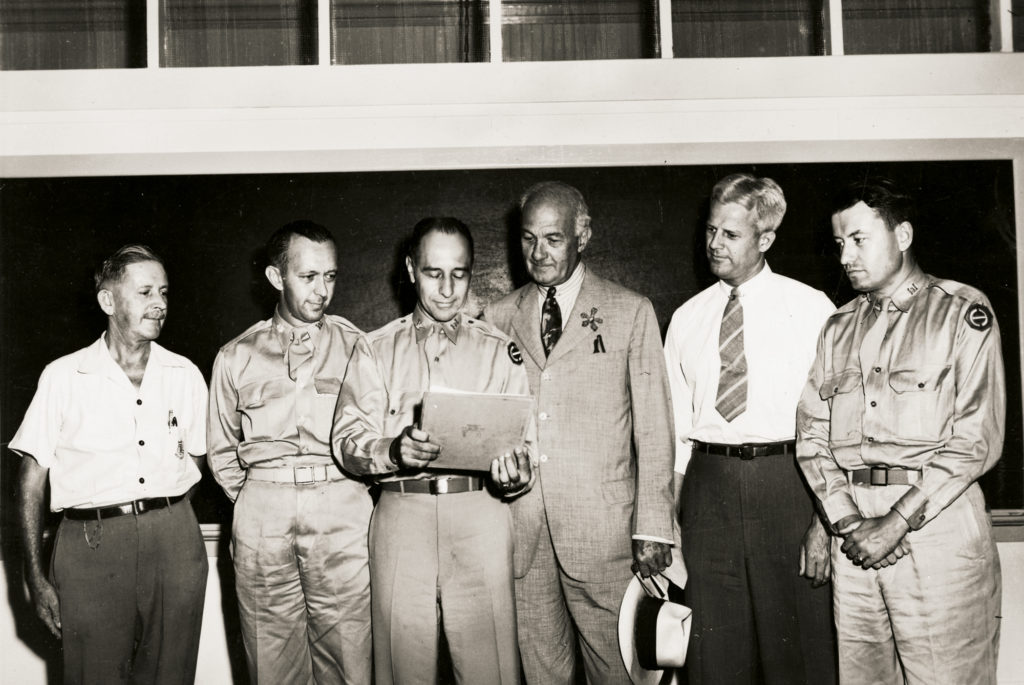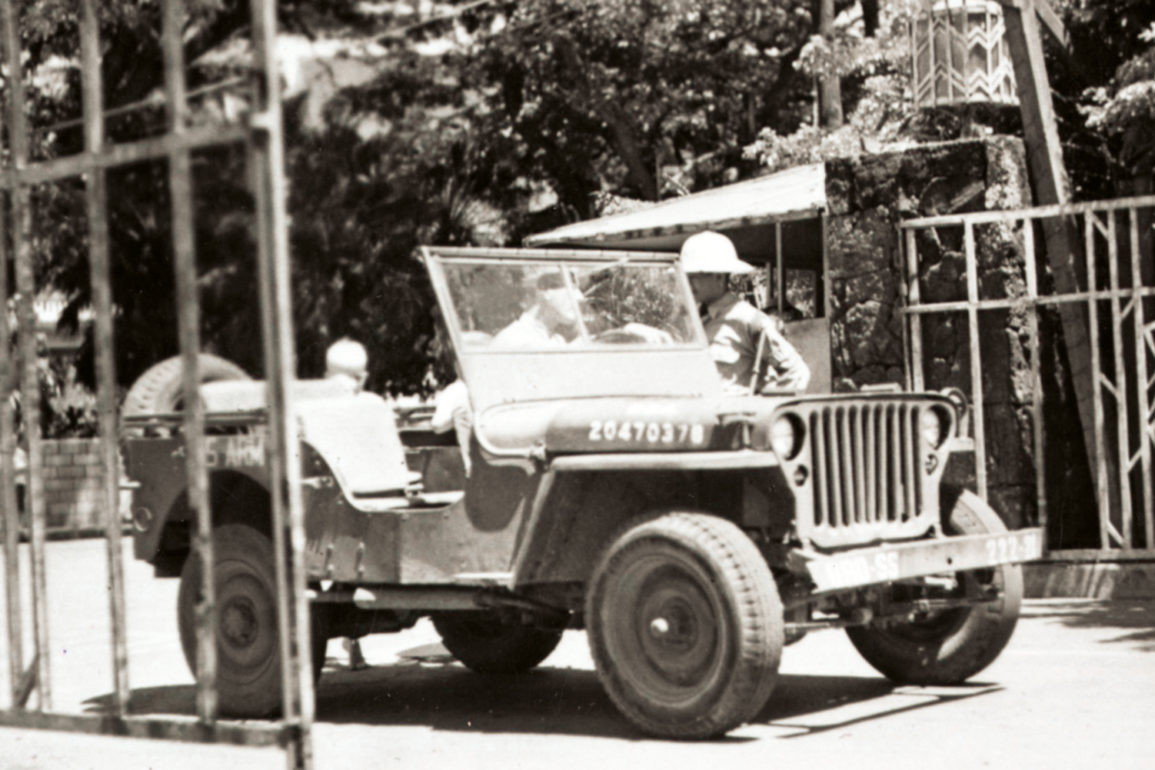Punahou’s yearlong centennial celebration was still fresh in everyone’s mind when the school year opened in September 1941. Student spirits were high, school projects received enthusiastic support from faculty and alumni, and enrollment stood at 1,450, with more children of military service members arriving every week. But just months later, the future of Punahou School was suddenly in question as the campus took on a significant role at the start of World War II.
THE FIRST 24 HOURS
Sunday, Dec. 7, 1941
7:55 a.m.
The first Japanese assault wave commences the attack on Pearl Harbor. The air raid lasts until 9:45 a.m.
Just Before Noon:
- Fires break out on McCully Street and at Lunalilo Elementary School. These events make the danger seem even more real, and suddenly very close to campus.
- Teachers and girls on the upper floors of Castle Hall (which at this time was a dormitory for boarding students) pack their belongings and drag their mattresses into the basement for the night.
Mid-Day
Radio broadcast announces orders from the Military Government for the closing of all schools and for complete blackout at dusk.
4 p.m.
The Punahou faculty men meet and a roster of patrol assignments for the night is drawn up. The patrols rely on faculty men and Wilcox Hall boys to guard different areas of the campus from 6 p.m. to 6 a.m. They are armed with ROTC rifles without firing pins, sticks, a length of pipe and a plumber’s hammer.
9 p.m.
An anti-aircraft shell falls between Pauahi Hall and Montague Hall, doing no other damage than shattering window glass.
Monday, Dec. 8, 1941
Between 1 — 2 a.m.
- U.S. Army Corps of Engineers arrive at Punahou’s main gate and immediately move onto campus and occupy Cooke Hall, Alexander Hall and Pauahi Hall.
- The school switchboard is taken over by the engineers and the school operator is called to put it into operation.
5 a.m.
Cafeteria Manager Nina “Peggy” Brown, in charge of Dole Hall, is ordered to provide breakfast for 750 men.
… we had our (ROTC) uniforms on, were asked to serve as guards around the various parts of campus. My particular assignment was the water tank up on Rocky Hill. It was dark and scary at night. The scariest thing, looking back, is that a lot of us fairly young, immature guys, were carrying loaded rifles around.
Daniel Case ’42

‘For the Duration’
Following the military government’s orders that all Hawai‘i schools were to remain closed, many Punahou students were evacuated to the continental U.S. to continue their schooling. For those who remained, school did not resume until Jan. 12 and when it did, it was not on Punahou’s campus. Classes met at Central Union Church and in individual homes throughout Manoa, Nu’uanu, Kahala and as far away as Waipahu. Eventually, all except the youngest students would settle in for the duration at the nearby Teachers’ College at the University of Hawai’i.

Punahou students were eager to help with war efforts and found a variety of ways to contribute. Several girls organized a group called Punahou Service and devised “pastime kits,” cigar boxes containing a crossword puzzle, deck of cards, and small cribbage and checkerboards, for soldiers stationed away from home or in hospitals. A few boys were organized into an ambulance unit, ready to help should an evacuation be needed, while others served as night firemen at Manoa fire station. The biggest contribution from Punahou students and teachers came in the form of war bond and stamp sales. These fundraising efforts resulted in $2 million in war bonds and generated $5 million in credits from businesses that made their investments in the School’s name. Fred H. Kanne, chairman of the Hawai‘i War Finance Committee, remarked that, “Punahou sales have been outstanding and I know of no school throughout the country which compares with its record.”
Generally speaking our people were soon convinced — after we returned to the campus — that the Army’s restoration of the buildings to their original condition, plus paying us $150,000 annual rent, hadn’t been too bad a deal for Punahou.
Dr. John F. Fox, President (1944 — 1968)
THE RETURN TO CAMPUS
On Feb. 6, 1945, with the entire student body gathered for a surprise assembly, President John Fox announced that the U.S. Army Corps of Engineers would soon be returning the campus to Punahou School. The army had promised to restore the School property to its pre-war condition, and during summer 1945, window blackouts were removed, trenches were filled in, temporary barracks were removed and buildings were restored to their original states with very little wear and tear.

That was part of the stipulation — that the government would put the buildings back in the original state before we took over the campus. So they took down all the things that they had built, undid all the changes they had made and fixed the campus up in rather good shape. You could see that it had suffered slightly from the war years, in spite of their efforts to renovate it. But, really, we had nothing to complain about. The government did a very good job on the whole.
Walter L. Curtis, teacher (1928 — 1944)
Academy Principal (1945 — 1969)

